Pumpkin Jack Be Little
$5.99
Cucurbita Pepo
- Seed Count 5
- Small Pumpkins
- Annual
In stock
Description
Pumpkin Jack Be Little is a lovely little pumpkin that is very endearing, remarkably miniature and averaging 8 to 9cm in diameter, and weighing in around 280 to 400 grams.
With a compact, semi-bush growth habit the plants grow to just 2m and are good for close spacing. They produce softball sized pumpkins with sturdy spineless handles, perfect for small hands to hold.
They take around 12 weeks to harvest, each plant producing an average of 9 fruits per plant. They makes an ideal climbing plant for any garden and look wonderful grown over tepees.
Roast whole to enjoy the sweet, golden flesh or stuff for a real gourmet treat. They can be easily be made into an edible and festive vessel for soup by roasting the mini-pumpkins and carving them into bowls.
Delicious and decorative, the globe-shaped, wee pumpkins are the perfect size for children to grow and use as a table decoration, for decorating indoors or outdoors in autumn.
Slightly flat-round shape like a normal pumpkin, the bright orange rind is smooth enough for painting..
| Method: Sow direct | Soil Temp: 20°C - 32°C |
| Cool Mountain : Sep - Dec | Position: Part Shade |
| Arid: Sep - Feb | Row Spacing: 1 m apart |
| Temperate: Sep - Dec | Planting Depth: 10 mm |
| Sub Tropical: Aug - Feb | Harvest: 105 days |
| Tropical: Apr - Jul | Plant Height: 4 m trailing |
Ideal Growing Conditions
Climate:
- Pumpkins thrive in warm climates and prefer temperatures between 20°C and 32°C.
- It’s best to plant in early spring or early summer. In cooler areas, wait until after the last frost.
Soil:
- Pumpkins prefer well-draining, nutrient-rich soil.
- Aim for sandy loam or a mixture with plenty of organic matter such as compost. A soil pH of 6.0 to 6.8 is ideal.
Sunlight:
- Ensure the growing area receives full sun with at least 6 to 8 hours of direct sunlight each day.
- This helps with healthy growth and fruit development.
Planting Techniques
Seed Preparation:
- Soak seeds for several hours, or even overnight, to enhance germination.
Planting
- Direct Sowing: Plant seeds 1 inch (2.5 cm) deep in well-prepared soil. Space seeds about 1 meter (3 feet) apart to allow for sprawling growth.
- Transplanting: If starting indoors (2-4 weeks prior to planting out), transplant seedlings when they have 2-3 leaves, and ensure all frost has passed.
- Row Spacing: If planting multiple rows, space rows 2 meters (6.5 feet) apart for air circulation.
Care and Maintenance
Watering:
- Keep soil moisture consistent, especially during flowering and fruiting stages.
- Drip irrigation is preferable to prevent wetting the foliage and to conserve water.
- Fertilisation:
- Apply a balanced fertiliser every few weeks or use compost for an organic approach.
- A side dressing of potassium-rich fertilizer during flowering can enhance fruit development.
Weeding and Mulching:
- Regularly remove weeds by hand or with a hoe.
- Apply organic mulch like straw or grass clippings to retain moisture, suppress weeds, and regulate soil temperature.
Beneficial Companions
Corn:
- Benefits: Acts as a natural trellis for vining pumpkin varieties. It also provides shade, helping to retain soil moisture.
Beans (especially bush beans):
- Benefits: Nitrogen-fixing plants that improve soil fertility.
Nasturtiums:
- Benefits: Attracts beneficial insects and can discourage pests such as aphids and squash bugs.
- They also serve as a trap crop, drawing pests away from pumpkins.
Marigolds:
- Benefits: Their flowers attract beneficial insects like ladybugs and lacewings, which prey on pests.
- They also repel nematodes and some other harmful insects.
Radishes:
- Benefits: Can deter cucumber beetles and other pests, while occupying soil space for the shorter growing season.
Garlic and Onions:
- Benefits: Natural pest repellents that can help to deter aphids and other common pests, without negatively affecting pumpkin growth.
Squash and Melons:
- Benefits: Other members of the Cucurbitaceae family can thrive alongside pumpkins; just ensure there’s adequate space to prevent competition for nutrients.
Plants to Avoid
Some plants can be detrimental to pumpkin growth:
Potatoes:
- They are heavy feeders and compete for nutrients, which may inhibit pumpkin growth.
Cabbage Family:
- These can attract pests that may harm pumpkin plants.
Mint:
- While aromatic and beneficial in many ways, mint can be invasive and compete aggressively with pumpkins for resources.
Pest and Disease Management
Pests: Aphids:
- Can be controlled with insecticidal soap or natural predators like ladybugs.
- Squash Bugs: Remove by hand if noticed early.
- Cucumber Beetles: Use row covers to protect young plants.
Diseases:
- Powdery Mildew: Manage with proper spacing, watering at the base of plants, and applying fungicides as necessary.
- Downy Mildew: Prevent by planting resistant varieties and ensuring good air circulation.
Harvesting Pumpkins
Timing:
- Harvest when pumpkins have reached their full colour, the flesh is hard, and the stem has turned brown and dried. This usually occurs 105 days after planting, depending on the variety.
Technique:
- Cut the pumpkins from the vine using a sharp knife, leaving 5-7 cm of stem attached to prevent rot during storage.

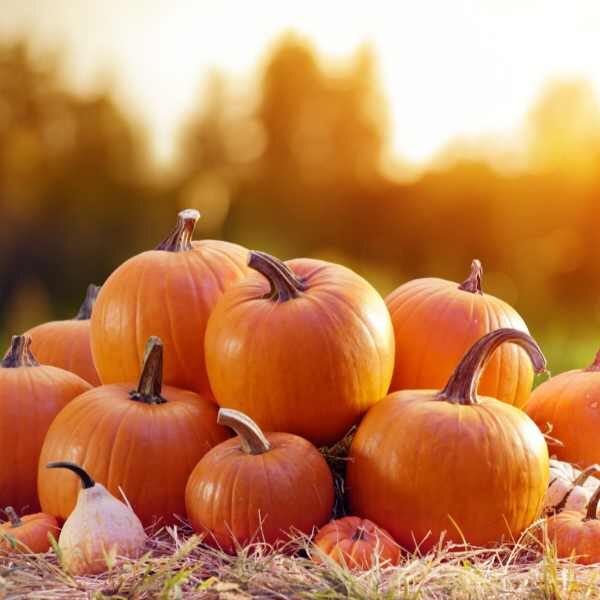




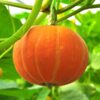
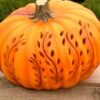
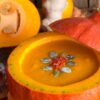

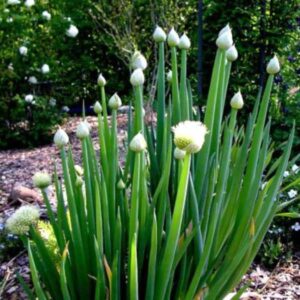
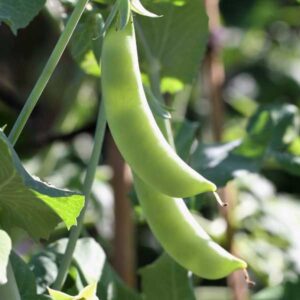
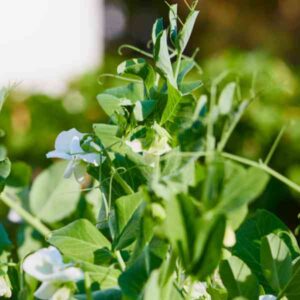

100% as described. I am yet to plant them.